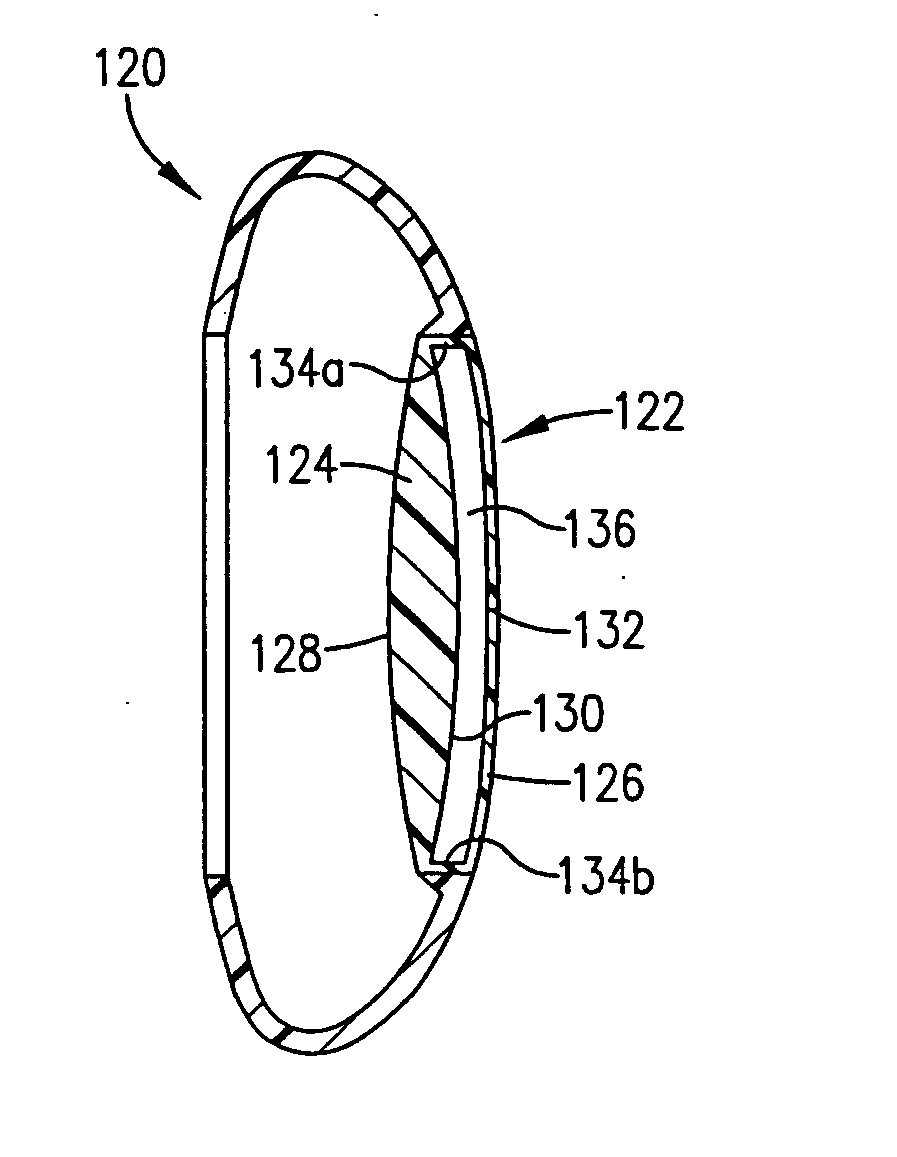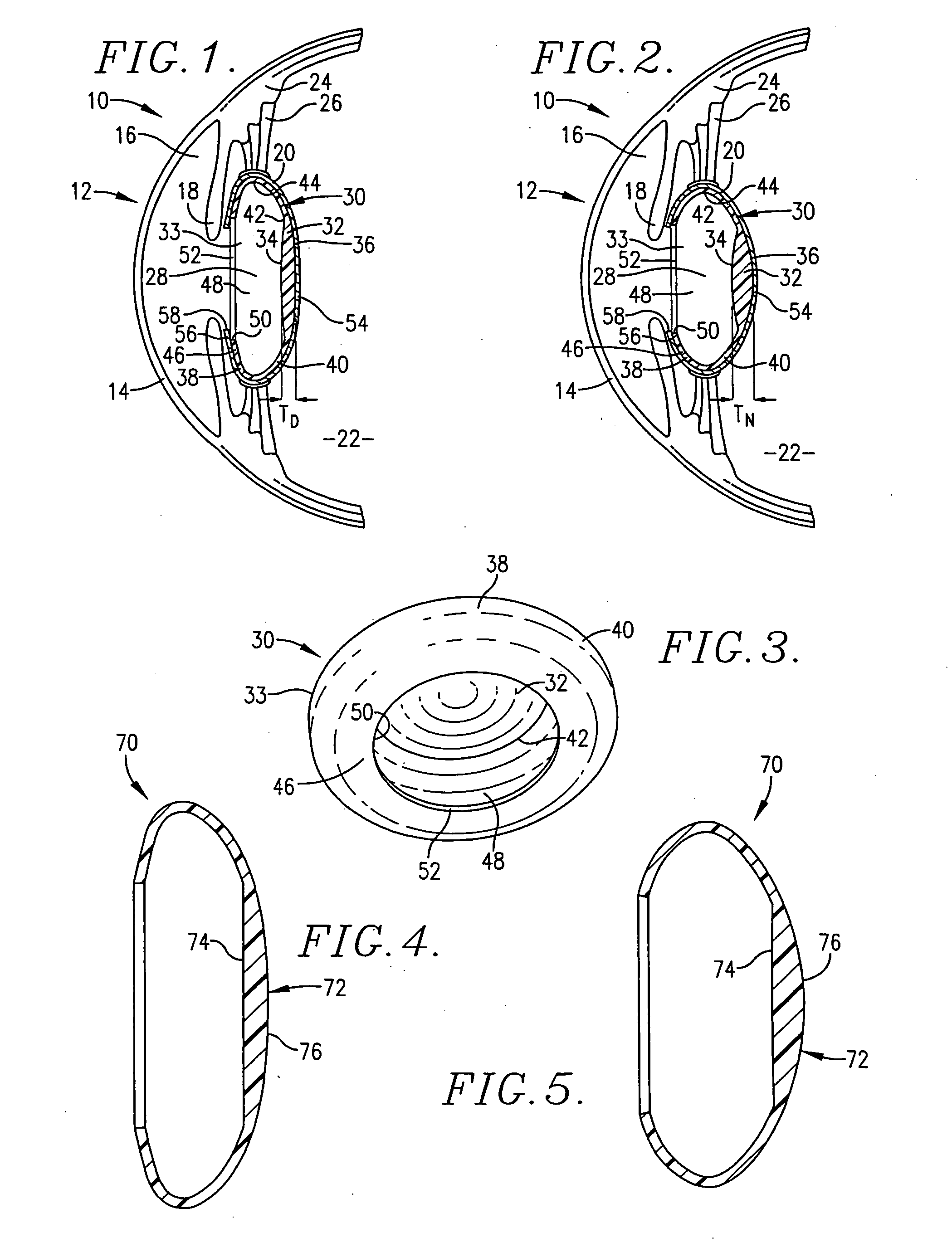Intraocular lens implant having posterior bendable optic
a technology of intraocular lens and optics, applied in the field of accommodating intraocular lenses, can solve problems such as increased light convergence, and achieve the effect of safe long-term use in the ey
- Summary
- Abstract
- Description
- Claims
- Application Information
AI Technical Summary
Benefits of technology
Problems solved by technology
Method used
Image
Examples
Embodiment Construction
[0030] Referring now to the drawings, the present invention is in the form of an intraocular lens for surgical replacement of the human lens in the treatment of cataracts in the human eye. FIG. 1 shows the various components of the human eye pertinent to this invention. Briefly, the eye 10 includes a frontal portion 12 and a rearward portion (not shown). The frontal portion 12 of the eye 10 is covered by a cornea 14 which encloses and forms an anterior chamber 16. The anterior chamber 16 contains aqueous fluid and is bounded at the rear by an iris 18. The iris 18 opens and closes to admit appropriate quantities of light into the inner portions of the eye 10. The eye 10 includes a capsule 20 which ordinarily contains the natural crystalline lens. When the eye 10 focuses, the capsule 20 changes shape to appropriately distribute the light admitted through the cornea 14 and the iris 18 to the retina (not shown) at the rearward portion of the eye 10.
[0031] Although not shown in the acco...
PUM
 Login to View More
Login to View More Abstract
Description
Claims
Application Information
 Login to View More
Login to View More - R&D
- Intellectual Property
- Life Sciences
- Materials
- Tech Scout
- Unparalleled Data Quality
- Higher Quality Content
- 60% Fewer Hallucinations
Browse by: Latest US Patents, China's latest patents, Technical Efficacy Thesaurus, Application Domain, Technology Topic, Popular Technical Reports.
© 2025 PatSnap. All rights reserved.Legal|Privacy policy|Modern Slavery Act Transparency Statement|Sitemap|About US| Contact US: help@patsnap.com



